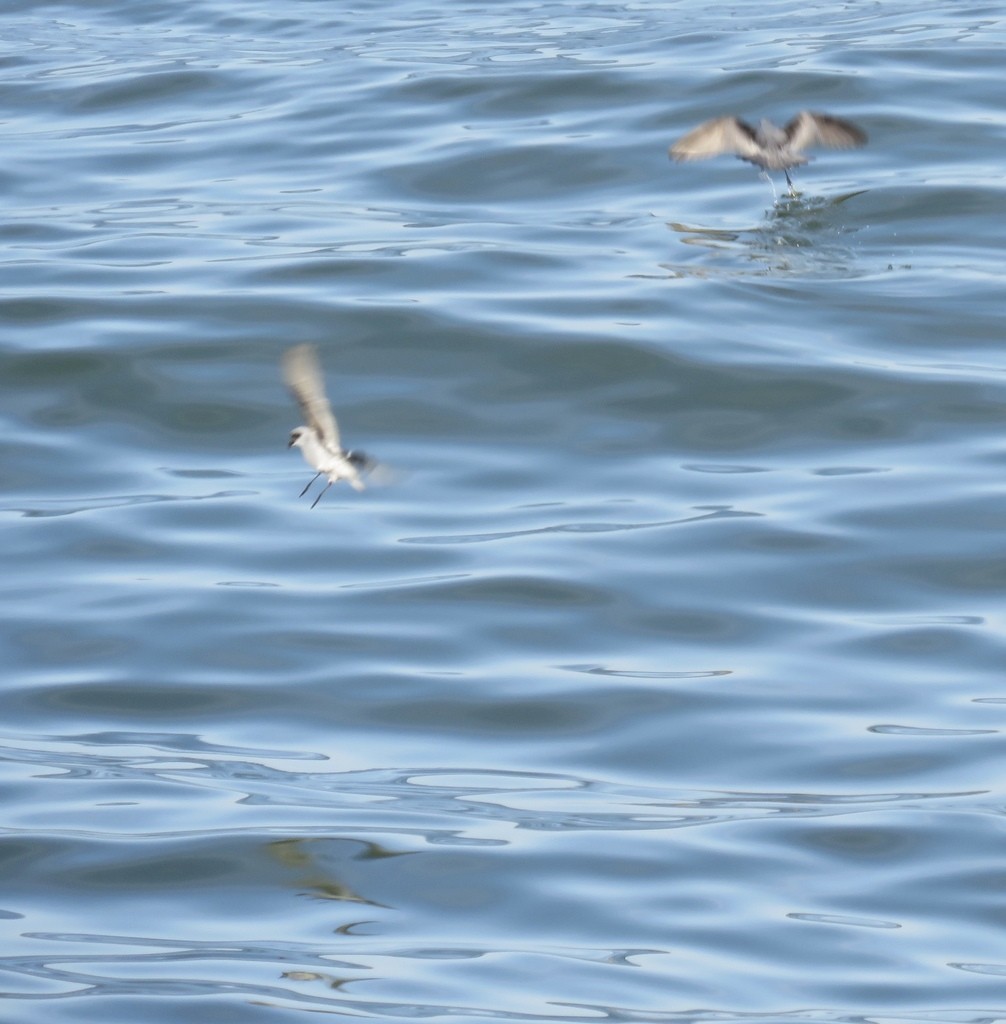Fork-tailed Storm-petrel
A species of Dark Storm Petrels Scientific name : Hydrobates furcatus Genus : Dark Storm Petrels
Fork-tailed Storm-petrel, A species of Dark Storm Petrels
Botanical name: Hydrobates furcatus
Genus: Dark Storm Petrels
Content
Description General Info
Description
The fork-tailed storm petrel is small seabird that is 20 cm in length with a wingspan of 46 cm. Its foraging behaviour resembles other storm petrels, where it flies with short, stiff wingbeats close to the surface of the water. Despite its name, the forked tail in this bird is not always visible. The distinguishing feature of fork-tailed storm petrels is their overall bluish-gray plumage. They generally have a paler underside, which contrasts the darker colours under their wings. They also have a dark gray forehead, a black ear patch, and a small, black bill. Other storm petrels are significantly darker, such as the similar looking ashy storm petrel. However, fork-tailed storm petrels from southern populations are somewhat darker than those in the north. Males and females of this species are generally very similar in colour and size. Juveniles also resemble adults with the exception of having a less noticeable notch in their tails. 
Size
23 cm
Life Expectancy
18 years
Nest Placement
Cliff
Feeding Habits
Fork-tailed Storm-petrel feeds on crustaceans and fish, swooping low to pluck prey from the sea surface, occasionally diving up to 2 feet deep. They use smell for locating food, foraging by day and night, and provide mostly fish to their chicks.
Habitat
Fork-tailed Storm-petrel predominantly resides in the marine environment of the North Pacific, favoring remote offshore islands for nesting. They select niches amid talus slopes, rock crevices, or underneath large trees, sometimes utilizing old burrows of other seabirds. The surrounding tundra vegetation often includes sedges and grasses. At sea, they prefer cold pelagic waters, typically foraging far from shore and beyond the continental shelf, especially in the nonbreeding season. Fork-tailed Storm-petrel tends to forage within a 50-mile radius of their nesting sites.
Nest Behavior
Fork-tailed Storm-petrel engages in minimal nest-building behavior, using available spaces or slight modifications to the terrain. Egg-laying directly on substrate reflects their low nest-structure investment. Parental care includes incubation and protection of young, displaying typical patterns for Procellariiformes, a group known for extended care periods and often a single egg per breeding season.
Nest Characteristics
Fork-tailed Storm-petrel typically nests in secluded, dry locations on marine islands. Their nests are found in a variety of spots such as abandoned burrows, under vegetation, in rock crevices, or among fallen logs. They sometimes excavate their own burrows and prefer soils that can be easily moved. Fork-tailed Storm-petrel's nests are generally simple, often sparse without structure, allowing for direct egg laying on soil or rock. Nest dimensions range from 13 to 23 inches deep with entrances sized around 3.9–4.7 inches high and 3.7–5.5 inches wide.
Dite type
Piscivorous
General Info
Feeding Habits
Bird food type
Behavior
Fork-tailed Storm-petrel exhibit monogamous pairing, often reuniting with their previous season's mate upon returning to breeding islands. They engage in aerial courtship displays and remain in close proximity to their nesting sites, extensively vocalizing and preening each other. Notable for their longevity in nest-site fidelity, fork-tailed Storm-petrel may reuse the same site for consecutive years. Both partners share incubation duties and chick provisioning, after which the fledgling independently departs. In the nonbreeding season, fork-tailed Storm-petrel form small foraging flocks, sharing in rest and communal feeding on the sea surface.
Distribution Area
The range of the fork-tailed storm petrel is estimated to cover 22,400,000 km with over 6,000,000 individuals occurring globally, making it the second-most widespread and abundant storm petrel. During the breeding season, the fork-tailed storm petrel form dense colonies on islands throughout northern California, Oregon, Washington, British Columbia, Alaska, and northeast Asia off the Kamchatka Peninsula. Most of their population is concentrated in Alaska, notably in the Bering Sea near the Aleutian Islands. Their southernmost colony is on Little River Rock in Humboldt County, with a population of 200 individuals. Their nesting habitat varies, ranging from bare rock to forests. They typically build their nests under rock crevices or roots, or burrow into soft ground with low-growing vegetation. As they frequent the open ocean, little is known about fork-tailed storm petrels outside of the breeding season. They have been frequently sighted off the Californian coast, making them the most northerly distributed storm petrel during the winter. Sparse sightings also indicate that they forage as far south as Hawaii. 
Species Status
Being widespread and abundant, the fork-tailed storm petrel is not threatened with extinction. However, humans impact their life history in many ways. As a species that feeds on surface material and follows ships, this storm petrel often ingests oil and plastic with their food items. Surprisingly, the fork-tailed storm petrel is relatively unaffected by the toxicity of oil, as their natural diet contains substances that are very chemically similar. Plastics also do not severely affect the birds because they can be regurgitated after ingestion. In contrast, being a top marine predator, fork-tailed storm petrels are susceptible to bioaccumulation. High lead concentrations have been found in the bones of petrels, and DDT can cause eggshells to become dangerously thin. The greatest threats that face fork-tailed storm petrels today are global climate change and introduced species. An increased severity of storms makes foraging more dangerous, decreasing the chances that an adult will return to the colony. The introduction of mammals also adversely affect storm petrels, where raccoons and river otters prey upon nests, and rabbits increase soil erosion and compromise the structural integrity of burrows. 
Scientific Classification
Phylum
Chordates Class
Birds Order
Albatrosses and Petrels Family
Hydrobatidae Genus
Dark Storm Petrels Species
Fork-tailed Storm-petrel 